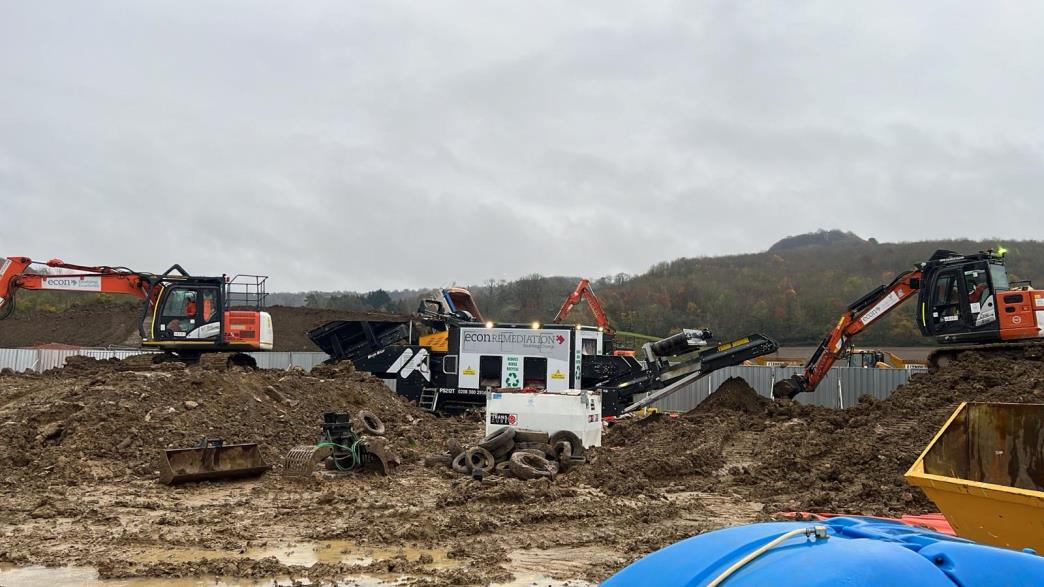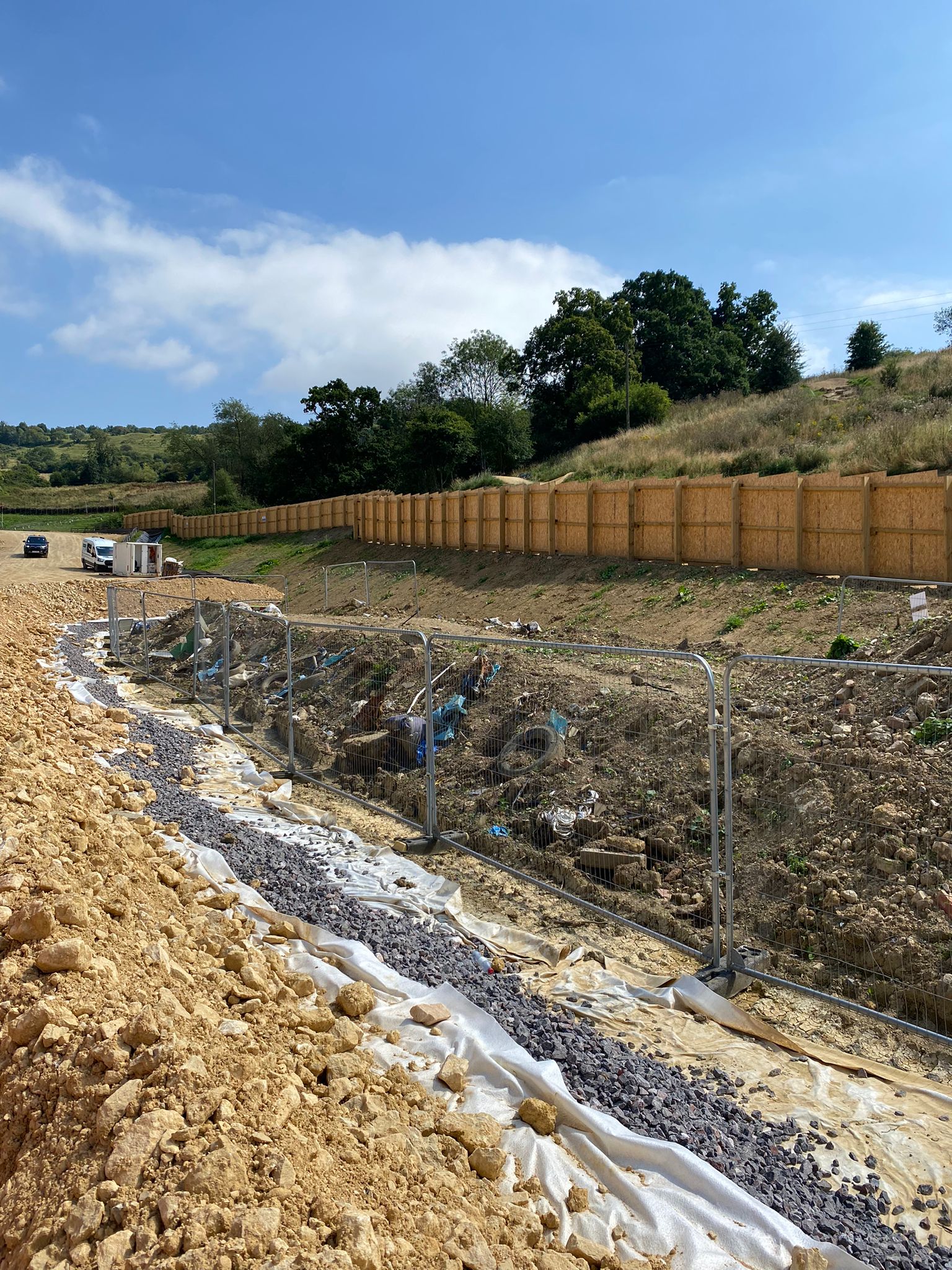
Econ Group were appointed to carry out the remediation works at the Grove Farm and Shab Valley sites, which form part of the A417 Missing Link scheme. The scheme is a significant infrastructure project led by National Highways, aimed at improving a critical section of the A417 between the Brock worth bypass and Cowley roundabout in Gloucestershire.
Our works comprise the removal of asbestos contaminated soils, cement pipe removal, trial pits and the removal of a buried interceptor tank.
Works began with the culvert excavation. Extreme care and precision were taken during the these works, as the stones were being re-purposed by the client for re-use.
CAT scans were carried out and permit to dig issued and a fenced of area was set-up within the A&A compound. All stripped material was the unloaded into a 10t dumper and carried to the asbestos stockpile within the A&A compound. All material was tipped under constant supervision and mechanical suppression.
During all excavations, loading and unloading was saturated using a jet wash bowser filled with water and surfactant, whilst Econ operatives conducted watch and brief whilst machine driver’s guided by banksmen carried out the loading of stockpiled asbestos contaminated soils into sealed tippers.
A detailed recording of the number tippers used in the removal process were kept via waste log and waste transfer notes.
This work involved the excavation of 30nr trial pits to enable the client to complete a detailed site investigation. Asbestos contaminated soils were stockpiled, and sampling exercises were undertaken within the controlled asbestos respirator zone.
The excavated material was laid on Hi-Vi Geo-Textile Ter ram within a Heras fenced area. All Ter ram was laid out in a way to allow the Ter ram to form a skirt 400mm from the floor up the fence to stop-a spill during unloading. At the end of each shift the stockpile was covered with Ter ram and suitably pegged down. The area was secured via lock, and asbestos warning signs applied.
During the excavations works, appropriate fencing was erected, with excavation signage clearly displayed. The trial pits were backfilled as work progressed.
To enable the construction of the scheme, excavation were required in places to form cuttings for the highway, clean recycled materials were used to form embankments and for general fill.
The removal of 1800m2, was carried out under a watching brief, due to the potential of hydrocarbon and oil contamination. The slab was broken down and removed in sections, via a 360 excavator, and mechanised suppression with a surfactant solution.
The work involved breaking and exacting approximately 1800m2 of concrete slab under controlled conditions and within a respirator zone. The underlying soils contain levels of hydrocarbon contamination. The slab/concrete were removed and visually segregated(classified as clean) to removed off site. The works required a methodical approach in order to eliminate any tracking over the newly exposed contaminated made ground.
A concrete slab located above the tank required removal prior to the extraction of the tank vessel; this was completed in small sections using grab jaws and placed directly into the awaiting general waste skip. During the breaking operations to prevent nuisance dust a mobile jet wash bowser was utilised during the works to supress any dust caused from the operations.
A PTO Vacuum allowed for the tank to be drained prior to removing, with spill kits placed within the working area. The tank was emptied via vacuum tanker and jetted clean and emptied again prior to removal.
The Safe removal of the buried (2.3mdeep, 5m long, 2m wide) interceptor tank was completed utilising a 21texcavator. Care and precision were taken during the tank removal; this allowed for the tank to be removed without damaging or puncturing the vessel unit. The tank was then dismantled in sections via use of the 21t excavator and selector grab. Sections of the tank were removed at the joints and pulled apart allowing the retrieval of small sections at a time.
Upon completion the machine bucket and attachments were decontaminated, and spoil was sent for sampling. The excavation was backfilled with self-compacting stone up to 1 meter from the top and compacted every 150mm and further compacted by roller. The top meter was filled and compacted with Class 1 material.






